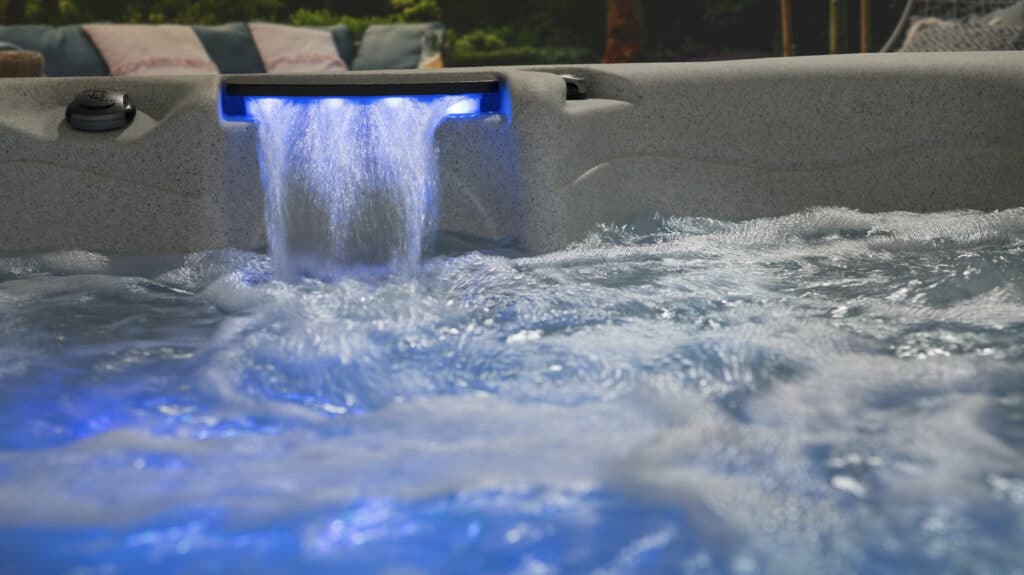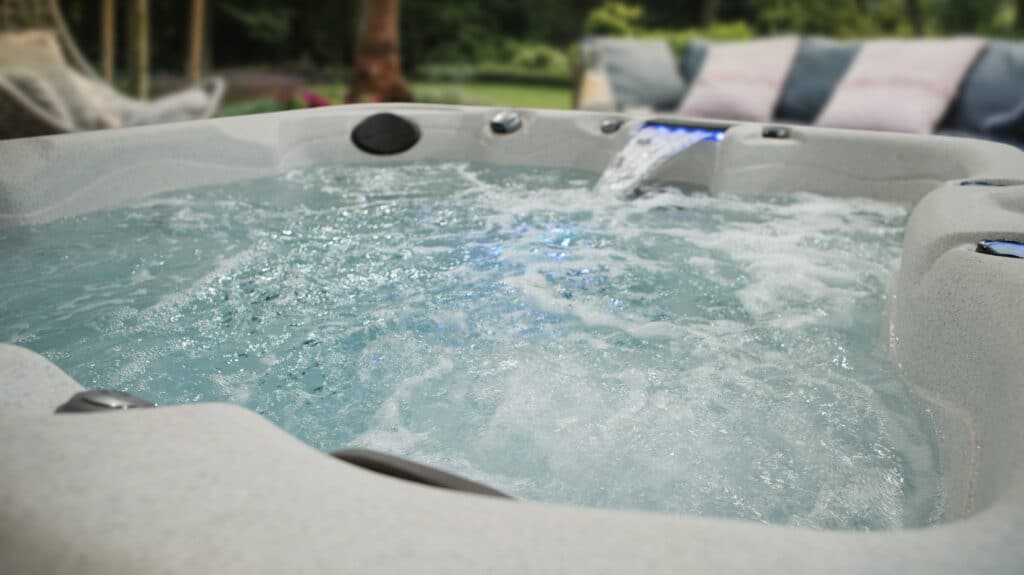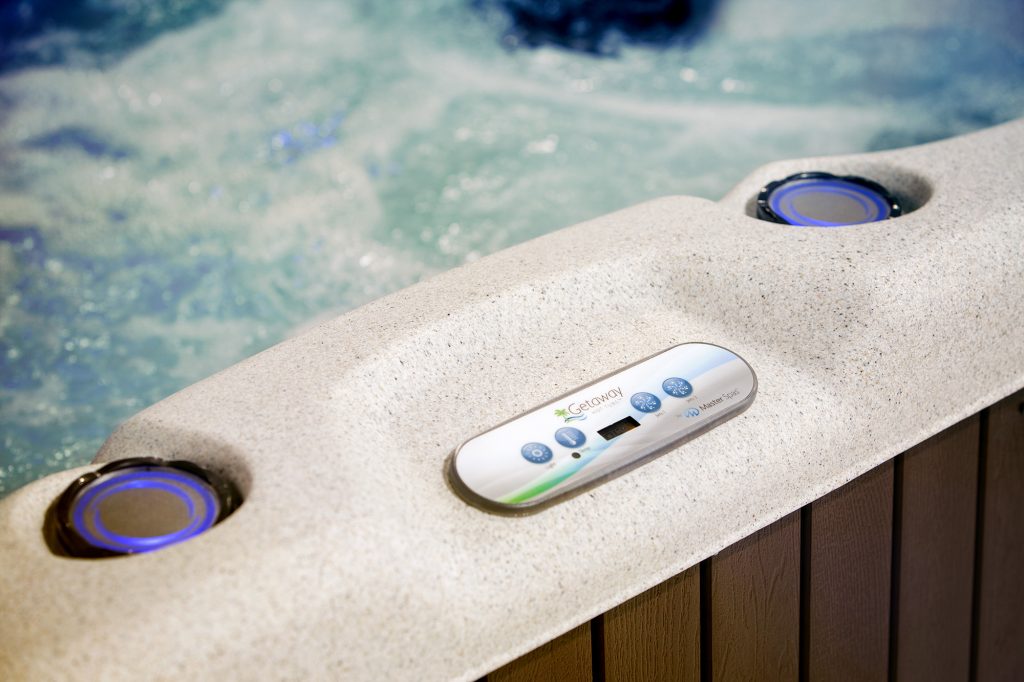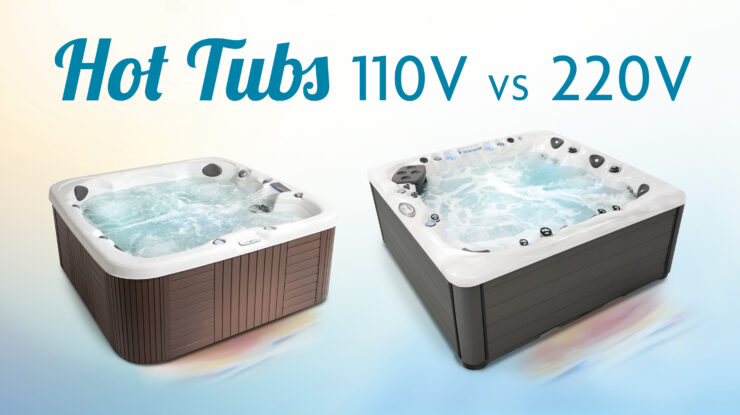Buying a hot tub should feel exciting. But with so many choices, it’s hard to know where to start. Do you focus on jet count or prioritize water care? And somewhere along the way, you’re suddenly weighing the pros and cons of 110V vs. 240V. You’re just looking for something that fits your space, your lifestyle, and your budget.
Do you really need an electrician to wire your hot tub? Is a plug-and-play hot tub powerful enough? Will it stay warm in the winter?
We get it: You want to feel confident in your decision — not second-guessing yourself as you await delivery. You want a hot tub that helps you relax, recover, and feel better without overcomplicating things.
Whether you’re looking for easy installation, portability, or stronger massage options, knowing how 110V and 240V hot tubs compare can help you find the right fit — and enjoy your hot tub experience from day one.

110V hot tubs: Easy, portable, and plug-in ready
One of the most appealing things about a 110V hot tub is the simplicity. You don’t need to hire an electrician or install a special power line. In many cases, it’s as easy as placing the hot tub, filling it with water, plugging it into a standard outlet, and getting ready to relax.
What are the advantages of 110V hot tubs?
Simple setup: No need for costly electrical work. Plug it in and enjoy.
Lower upfront cost: Typically more affordable than 240V models.
Portable: Lightweight construction makes them easier to move or take with you if you relocate.
Compact: Great for smaller patios, backyards, or vacation homes.
Master Spas offers a line of 110V hot tubs under the Getaway Series. These hot tubs feature a lightweight yet durable design and a simple, intuitive touchscreen panel to control jets and temperature.
What about cold weather?
A common concern with 110V hot tubs is whether they can keep up in colder climates. It’s true that these models have smaller heaters — usually around 1 kilowatt — compared to the 4 kilowatt heaters found in 240V spas. But insulation and cover quality can make a big difference.
Getaway Series hot tubs from Master Spas feature full foam insulation, which helps retain heat and improve energy efficiency. And with a high-quality, well-fitting cover, your hot tub will be better protected from heat loss even in colder weather.
“I’ve dreamed of having a wonderful hot tub and thanks to you, my dream has come true! I love it!” — Sandra, Ohio
220V hot tubs: More power, more performance
If hydrotherapy is your priority, or you want all the bells and whistles, a 220V hot tub might be a better fit. These spas are designed for higher performance — powering more pumps, more jets, and more features.
What are the advantages of 220V hot tubs?
- Stronger massage: More power means a deeper, more therapeutic jet experience.
- More features: Bluetooth audio, LED lighting, WiFi connectivity, and other premium options.
- Better energy efficiency over time: Although the heater is larger, it runs more efficiently and heats faster.
- Greater variety of jet styles and seating configurations.
220V hot tubs typically require a 50-amp electrical connection, installed by a licensed electrician. The upfront cost might be higher, but for many hot tub owners, the performance and long-term benefits are worth it.

110V hot tub options
Master Spas manufacturers a unique line of lightweight, durable hot tubs. The Getaway series brings your next getaway to the convenience and comfort of your backyard. And many of the hot tubs require just a 15-amp 110V connection, meaning that you can plug and play.
Getaway Bar Harbor SE
The Bar Harbor SE is a budget-friendly hot tub that has room for up to five adults. While it’s portable and lightweight, it has the amenities you would expect, including 25 jets and a cascading waterfall.
Getaway Ocho Rios SE
This four-person hot tub has an open seating arrangement. There are four bucket seats and 17 jets to help you relax in the comfort of your backyard. This portable 110V hot tub can also be converted to a 220V/50-amp spa.
Getaway San Miguel
This three-person hot tub is not only space-conscious but budget friendly. The San Miguel has 16 massage jets and easy-to-use touch panel. Another benefit of this lightweight hot tub is that it can be converted from 110V to 220V.
Frequently asked questions
What’s the difference between a 110V and 240V hot tub?
A 110V hot tub uses a standard outlet and is easier to install but has slower heating and weaker jets. A 240V hot tub heats faster, offers better massage, and runs more efficiently — but needs professional installation.
Is a 110V hot tub good in cold weather?
110V hot tubs can work in cold weather, but they may struggle to keep the water warm if the air temperature drops significantly. A 220V model is better for year-round use in colder climates.
Does a 240V hot tub cost more to run?
While the upfront cost is higher, 240V hot tubs are often more energy-efficient over time, especially in colder climates. The larger heater and pump system allows the spa to maintain temperature without overworking.
Can I convert my 110V hot tub to 240V?
Some 110V hot tubs are convertible to 220V. Check your owner’s manual or contact the manufacturer. A licensed electrician is required to complete the conversion safely.

Which hot tub is right for you?
When it comes to finding the best hot tub, there’s myriad models to fit your lifestyle and budget. Explore your options by the cost of the hot tub or number of seats. Or, contact your local Master Spas retailer to learn more about hot tub ownership. Wondering how much a hot tub costs? You can request a quote here.


